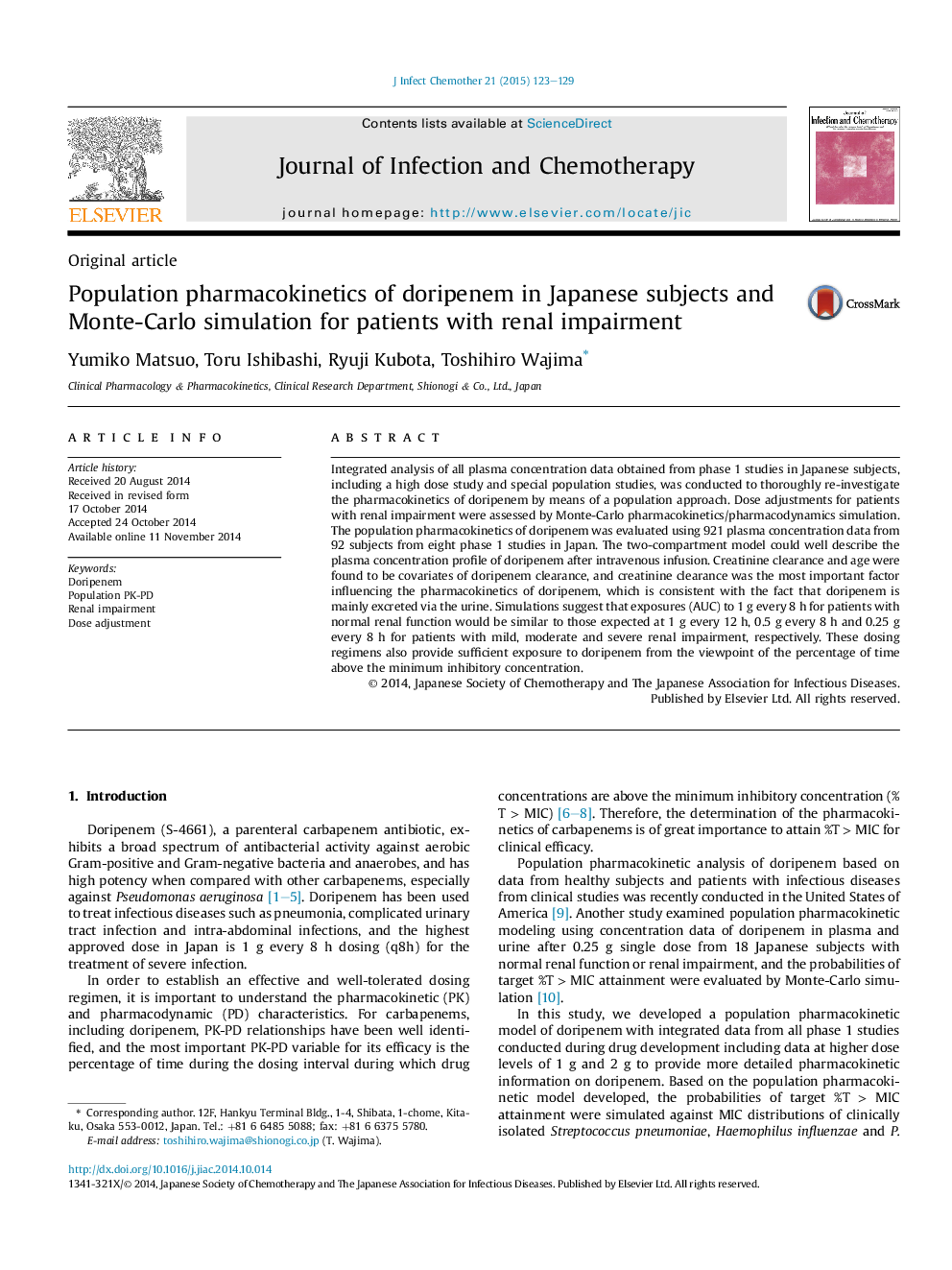| Article ID | Journal | Published Year | Pages | File Type |
|---|---|---|---|---|
| 3376781 | Journal of Infection and Chemotherapy | 2015 | 7 Pages |
Integrated analysis of all plasma concentration data obtained from phase 1 studies in Japanese subjects, including a high dose study and special population studies, was conducted to thoroughly re-investigate the pharmacokinetics of doripenem by means of a population approach. Dose adjustments for patients with renal impairment were assessed by Monte-Carlo pharmacokinetics/pharmacodynamics simulation. The population pharmacokinetics of doripenem was evaluated using 921 plasma concentration data from 92 subjects from eight phase 1 studies in Japan. The two-compartment model could well describe the plasma concentration profile of doripenem after intravenous infusion. Creatinine clearance and age were found to be covariates of doripenem clearance, and creatinine clearance was the most important factor influencing the pharmacokinetics of doripenem, which is consistent with the fact that doripenem is mainly excreted via the urine. Simulations suggest that exposures (AUC) to 1 g every 8 h for patients with normal renal function would be similar to those expected at 1 g every 12 h, 0.5 g every 8 h and 0.25 g every 8 h for patients with mild, moderate and severe renal impairment, respectively. These dosing regimens also provide sufficient exposure to doripenem from the viewpoint of the percentage of time above the minimum inhibitory concentration.
